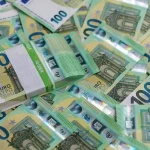The Search for the very best Counterfeit Money Provider: A Deep Dive into Risks and Solutions
Amidst the intricacies of modern economies, the subject of counterfeit money stays a pressing problem. The effect of counterfeit currency is considerable, leading to losses for services and deteriorating public rely on monetary systems. This post aims to explore the subtleties surrounding counterfeit money, the methods utilized by counterfeiters, and the potential (albeit illegal) "companies" in this shadowy marketplace. Additionally, it talks about the measures to fight counterfeiting and comprehend the broader social and legal ramifications.
Comprehending Counterfeit Money
Counterfeit money refers to imitation currency produced with the intent to trick and fraudulently utilize it as real money. Counterfeiting has a long history and has evolved considerably with developments in innovation. Over the last few years, the rise of digital platforms and advanced printing techniques has actually made it much easier for counterfeiters to produce premium reproductions of genuine currency.
The Dangers of Counterfeit Currency
Economic Impact: Counterfeit currency undermines the economy by increasing inflation and decreasing the value of real currency.
Loss of Trust: It erodes consumer confidence in the monetary system, resulting in greater scrutiny of monetary deals and practices.
Legal Consequences: Being involved with counterfeit money, whether knowingly or unwittingly, can lead to severe legal charges, consisting of jail time and heavy fines.
Increased Costs for Businesses: Businesses face additional expenses associated with determining counterfeit notes, including training workers and carrying out more advanced verification systems.
Typical Characteristics of Counterfeit Bills
To understand the nature of counterfeit money, it is vital to know the typical characteristics that can assist determine them:
Inconsistent Quality: Counterfeit costs frequently have inferior printing quality, like fuzzy edges or blurred printing.
echte banknoten bestellen : Legitimate currency is usually printed on unique paper that has an unique texture and feel.
Missing Watermarks: Genuine costs feature watermarks that are challenging to replicate.
Incorrect Security Features: Items like security threads, microprinting, and holograms may be missing or improperly replicated on counterfeit bills.
Color Discrepancies: Counterfeit costs may display colors that are not real to the real currency due to insufficient printing approaches.
The Illegality of Counterfeit Providers
Though different sources might exist that offer counterfeit currency, it is paramount to highlight that these sources operate outside the law. Engaging with counterfeit money service providers is criminal and includes major ramifications. Police work relentlessly to split down on counterfeit operations, employing advanced technologies and investigative strategies to find counterfeiters.
Secret Points to Consider:
Legality: Counterfeiting is illegal in all forms and can result in serious criminal charges.
Ethical Implications: Contributing to counterfeit activities not only endangers one's own future however also harms society as a whole.
Fraud Prevention: Investing in legitimate business practices yields far better security and returns compared to involvement in the counterfeit economy.
Procedures to Prevent Counterfeiting
Federal governments and banks take numerous actions to combat counterfeiting. These are some methods that can assist decrease the incidence of counterfeit currency:

Boosted Security Features: Nations constantly update their currency with innovative security functions, making counterfeiting significantly hard.
Public Education Campaigns: Governments launch awareness campaigns to educate the public about how to recognize counterfeit bills.
Training for Businesses: Financial organizations provide training for businesses to acknowledge counterfeit currency and execute procedures for detection.
Usage of Technology: Cutting-edge innovations like ultraviolet scanners and digital currency systems help in early detection of counterfeit expenses.
Law Enforcement Collaboration: Agencies work closely with banks to track and nab counterfeiters.
The Future of Currency and Counterfeiting
As society approach a more digital landscape, the techniques of counterfeiting are most likely to evolve. Cryptocurrencies, digital wallets, and electronic payments have started to alter the financial landscape significantly. Some specialists predict that counterfeit physical currency might decrease as customers embrace these digital options more widely. Nevertheless, this shift provides its own risks and issues, as cybercrime and digital forgery become increasingly common.
FAQs About Counterfeit Money
Q1: What should I do if I get a counterfeit expense?
If you presume that you have actually received a counterfeit costs, do not try to pass it. Rather, report it to the local police. They will assist you on the next actions and may gather the counterfeit expense as proof.
Q2: Are all counterfeit expenses easy to identify?
Not always. Some counterfeit expenses can be challenging to recognize, especially if they are of high quality and make use of sophisticated printing strategies. It's necessary to understand the security features of the currency you deal with.
Q3: Can I be punished if I unknowingly accept counterfeit currency?
Typically, understanding involvement in counterfeiting brings more extreme charges. However, accepting counterfeit currency unknowingly might lead to loss of money and time as you try to deal with the problem through police.
Q4: How can businesses protect themselves versus counterfeit bills?
Organizations ought to buy training workers to identify counterfeit expenses, utilize verification equipment, and stay informed about the most current security functions in genuine currency.
Q5: Is counterfeiting just a problem in money transactions?
While cash transactions are the most visible element of counterfeiting, digital platforms can face their own types of forgery, primarily through frauds, hacking, and fraudulent digital currencies.
Conclusion
The world of counterfeit money is packed with dangers and ethical issues. While the idea of procuring counterfeit currency may seem enticing, it ultimately brings substantial legal and monetary consequences. Understanding the complexities of counterfeiting-- together with using effective prevention approaches-- will act as the most prudent approach to securing personal assets and societal trust in financial systems.
